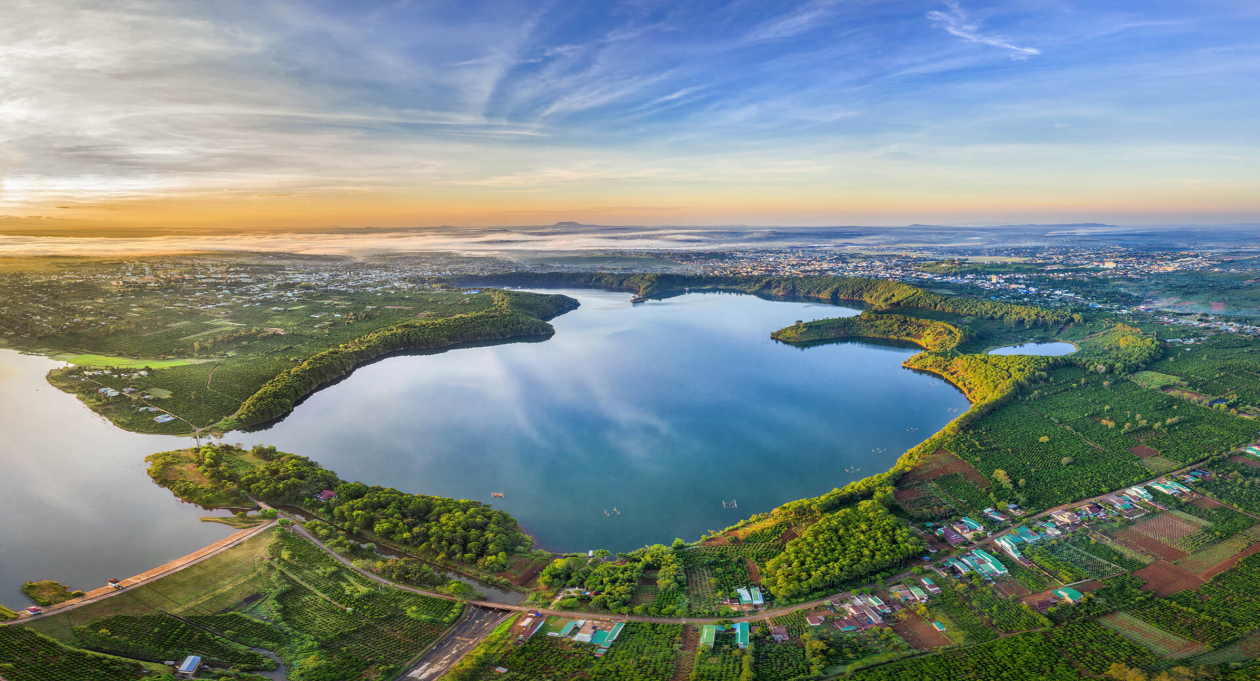Gia Lai is a mountainous region located in Vietnam’s Central Highlands—a unique blend of nature and culture. It’s also home to multiple ethnic minority groups, including the Jarai (in fact the name Gia Lai translates into the “Land of the Jarai”). For easy access to Gia Lai there’s an airport in Pleiku (the capital city). Flights run daily from both Da Nang and HCMC. From November to April is the dry season in Gia Lai and also the most perfect time to conquer this beautiful land. November and December, Gia Lai will be covered in sunshine, the yellowish of ripe rice terraces, of wild sunflowers in full bloom and brilliant cassia flowers. From around February to April, this mountainous land is dressed in white with coffee flowers.
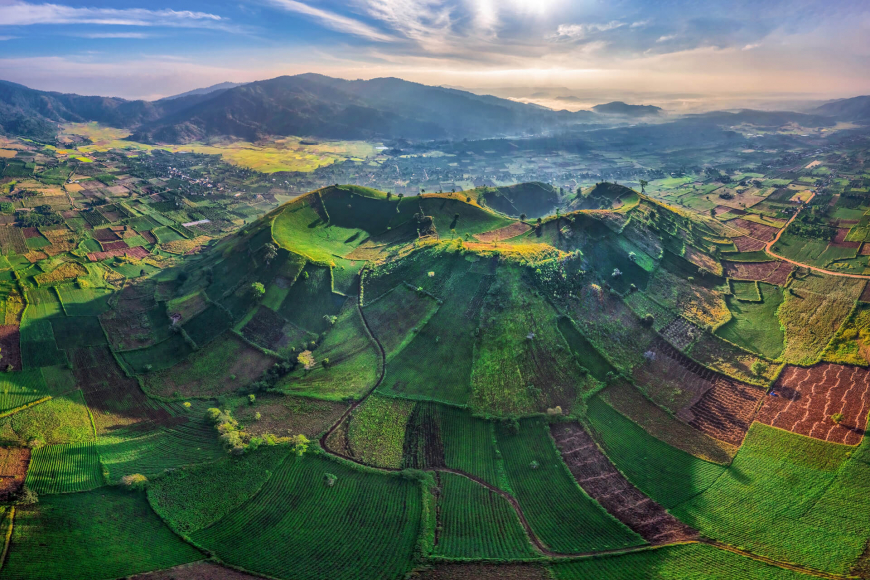
Despite being one of Vietnam’s largest provinces, Gia Lai has mostly flown under the radar as a tourist destination. Gia Lai is known throughout Vietnam as a “Gong Culture”, in both the use of the instrument and for the artisans who build and tune them. You’ll find gongs used in traditional rituals and celebrations in the many villages of the ethnic minority groups.

Source: Internet
Gia Lai is mystifying and beckoning, certainly a location for those seeking a “genuine” Vietnamese experience. Below are some suggestions.
T’Nung Lake (aka Ocean Lake) has been immortalized in many romantic songs and poets, compares the fabulous lake to the eyes of a beautiful young woman. The lake is massive and occupies the crater of a long extinct volcano. T’Nung Lake is also called a "bottomless lake" due to the difficulty in determining the depth of the lake. Pine trees line the path to the lake, forests and flowers surround it. Butterflies, bees and birds—an abundance of fish and shrimp. You can traverse the lake in dugout canoes.

11km outside of Pleiku is Ham Rong (Dragon’s Jaw Mountain). 1,000m above sea level, this extinct volcano is ideal for trekkers and photo buffs alike. Covered in forest green and often cloaked in clouds, the winding path leading to the top is heralded by wild sunflowers in their yellow splendor. Exquisite, panoramic views await you at the peak as you view the sprawling coffee, rubber and tea plantations below. Ham Rong offers a romantic visage with an equally romantic backstory.
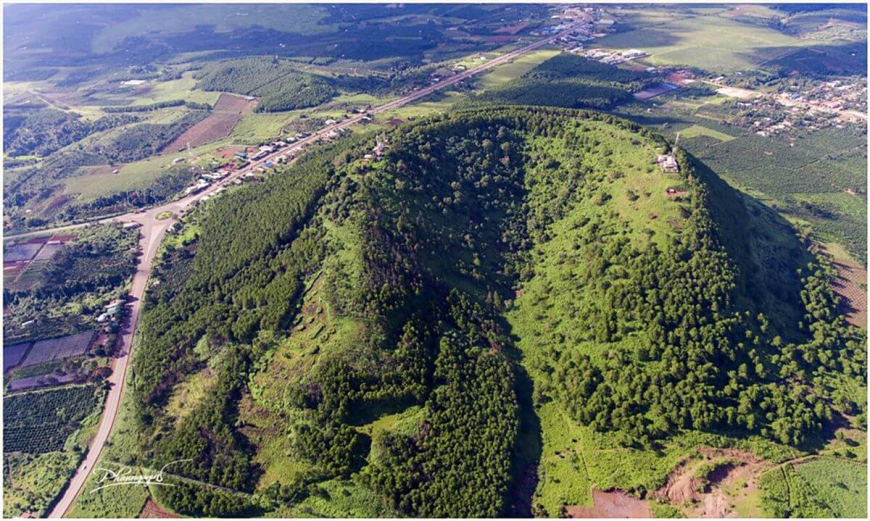
Source: Internet
The Dong Xanh Cultural Village (in the An Phu commune) is only 10km from Pleiku. Built amid sprawling rice fields, the village consolidates all the cultural extravagance of the province. Rong Houses, tomb houses, sculptures, lotus lakes, gardens and fountains. Festivals and celebrations with music and dance are common place, with gongs and the T’rung instrument always on display (T’rung is an instrument of varying sized bamboo tubes, with the gongs they provide the spiritual soundtrack of the Central Highlands). As you enter the village, you’ll be greeted by two stone elephants. While you’re there you can admire Vietnam’s oldest fossilized tree (over one-million years old), cross arched stone bridges and gaze in awe at the giant bamboo water-wheels.

Source: Internet
Minh Thanh pagoda (located in Pleiku) is not “old” as far as pagoda’s go (built in 1964) but its architecture is quite unique. Just outside the city center, on rolling hills, this place of worship is instantly recognizable by its 72m high, gold painted tower. The ceiling of the main hall is made of po mu wood from the highland forests, while the massive wooden doors of the pagoda present carved reliefs of six Bodhisattvas. There’s a bell tower, altars, a 4-ton incense pit, a large lotus pond and over 3,000 statues. Minh Thanh pagoda offers spiritual serenity in the midst of a bustling city.

Source: Internet
Kon Ka Kinh National Park is located in the Mang Yang District (50km from Pleiku). Named an ASEAN Heritage Park in 2003, this sprawling (42,000 hectares) natural wonderland offers an abundance of biodiversity: rivers, streams and waterfalls, over 500 flora species and 400+ animal species. While the park’s Ba River valley sits a modest 570m above sea level, the Kon Ka Kinh peak rises to nearly 2,000 meters. Kon Ka Kinh is a trekker’s delight and a photographer’s dreamscape.
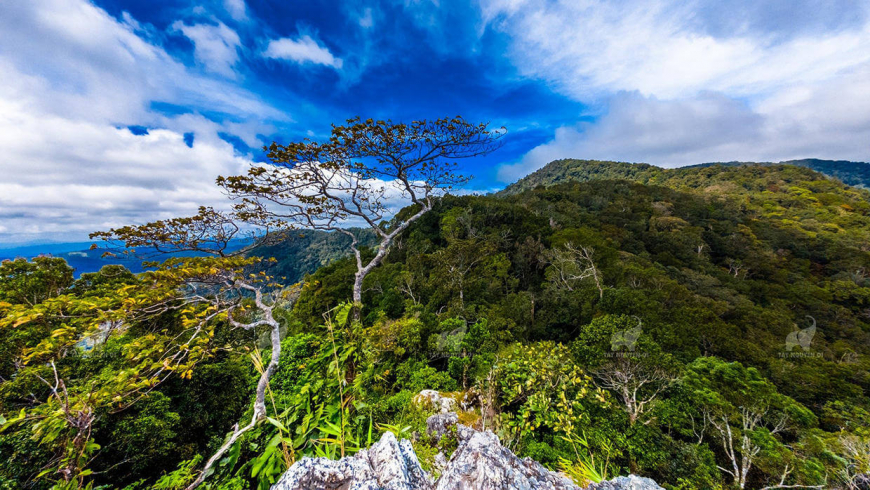
Source: Internet
Phu Cuong Waterfall is only 45km from Pleiku. Flowing over lava rocks from an eon’s old volcanic eruption, the falls drop from a height of 45m. The foot of the falls is accessible via a narrow bridge and staircase. The vegetation is a mix of ancient trees, moss, ferns and flowers. As you ascend, you’ll find grassy hills and plants with leaves resembling giant wingspans. There’s a prehistoric vibe that permeates. The path leads to a cave behind the falls where hikers can hunker down and chill while watching the cascades.
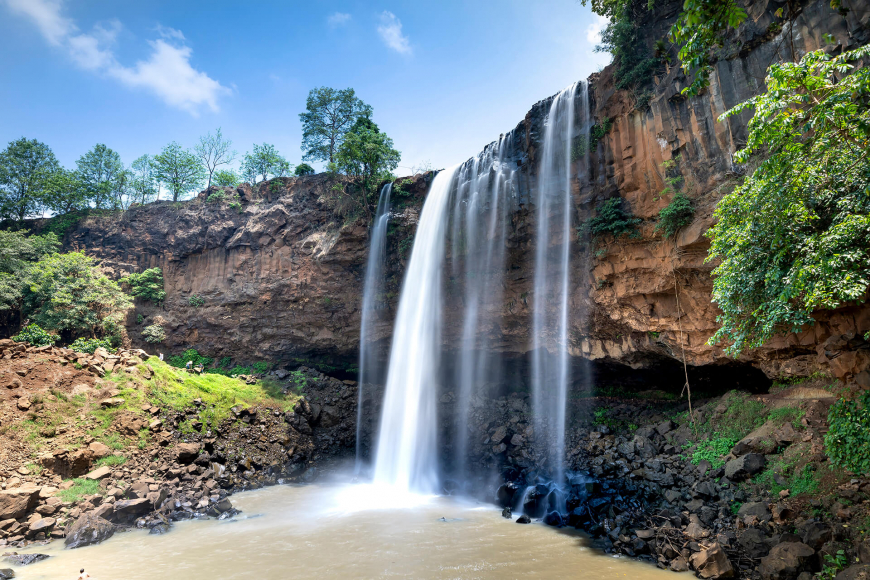
A bit further afield is K50 Waterfall (also called Hang En Waterfall). It’s about 150km from Pleiku (buses run regularly or you can take a motorbike or taxi). Located in the Kon Chu Rang Nature Reserve and surrounded by dense jungle and steep mountainous slopes, this 54m high fall is accessible via a stone staircase which eventually turns into a dirt path. If you’re so inclined, you can use rope ladders to descend closer to the bottom of the falls. From there you can then hook up with further trails. For dedicated trekkers, K50 Waterfall is an astonishing nature experience.
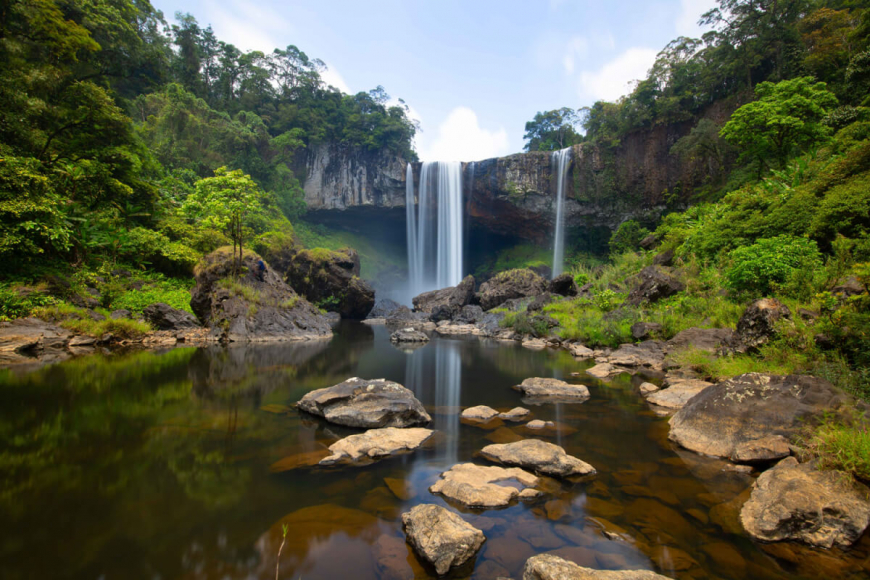
Source: Internet
De K’Tu Village (35km from Pleiku) is home to the region’s renowned Rong House. This traditional Central Highland stilt-style house, with its steep-gabled roof, is the communal gathering place for villagers of the Ba Na communities. The giant public house is the village’s headquarters, where elders meet to discuss village affairs and rituals are conducted. It is also the place to welcome visitors. The Ba Na culture is timeless, their dress style unique and their folk music mesmerizing. Like the Jarai they are part of the “gong” culture. Near the Rong House you’ll also find the Tomb House. Steeped in tradition and mythology, De K’Tu Village is a must stop for an infusion of highland culture.
If you’re seeking the ultimate blend of culture and nature, then you must add Gia Lai to your travel itinerary.

